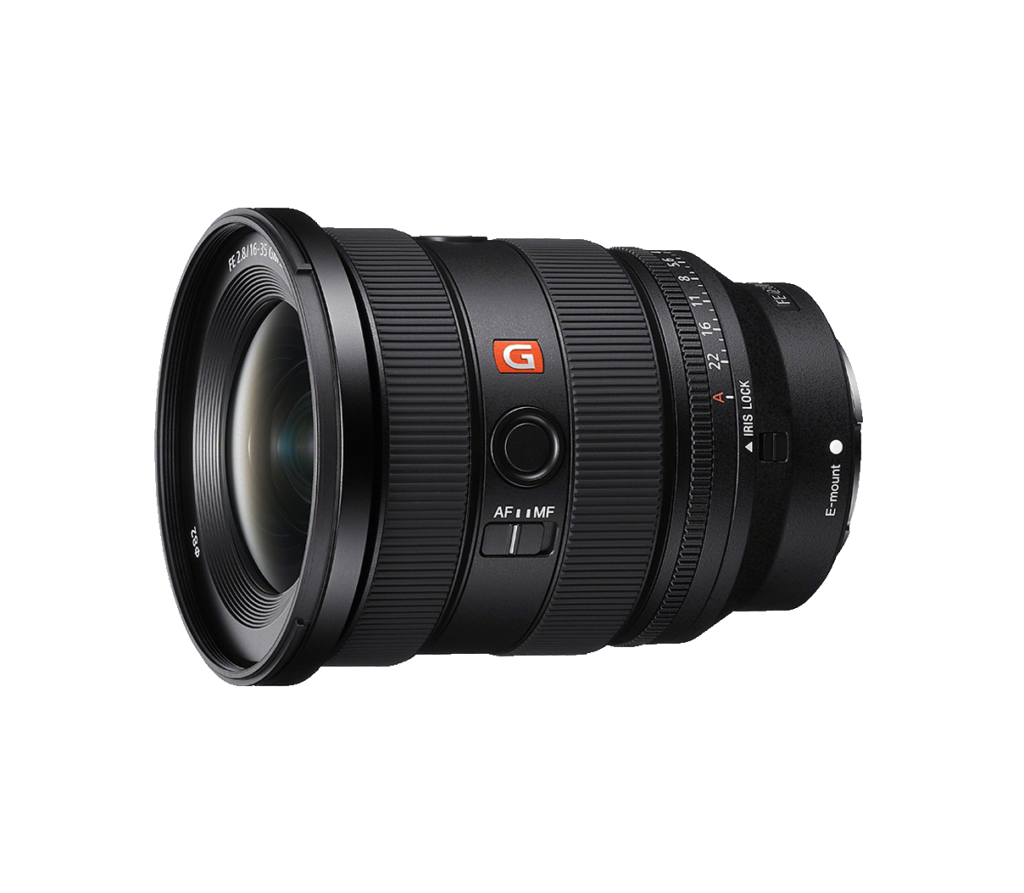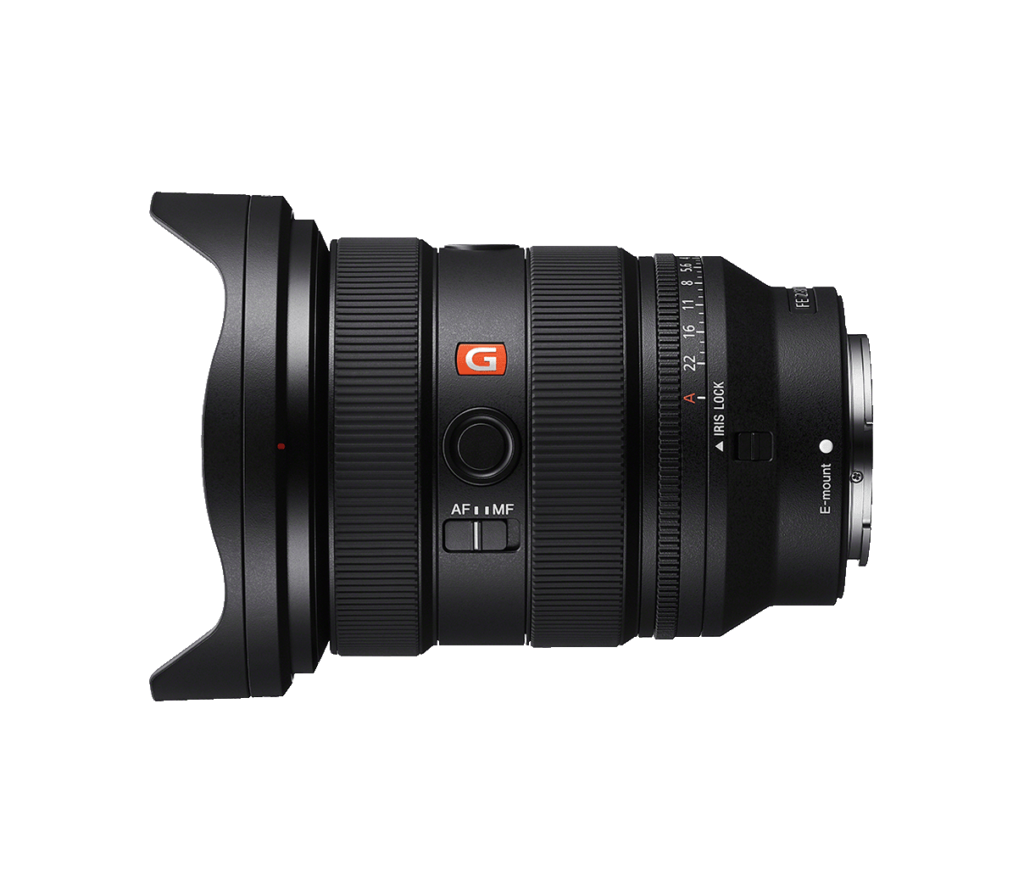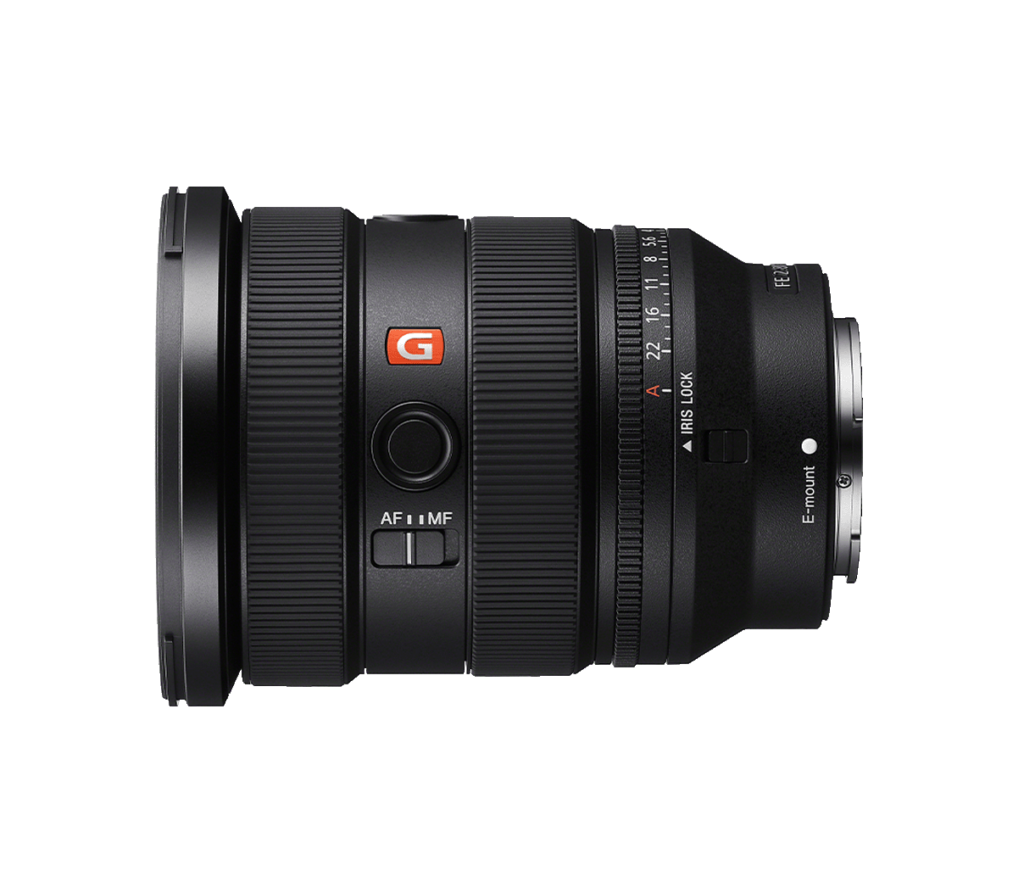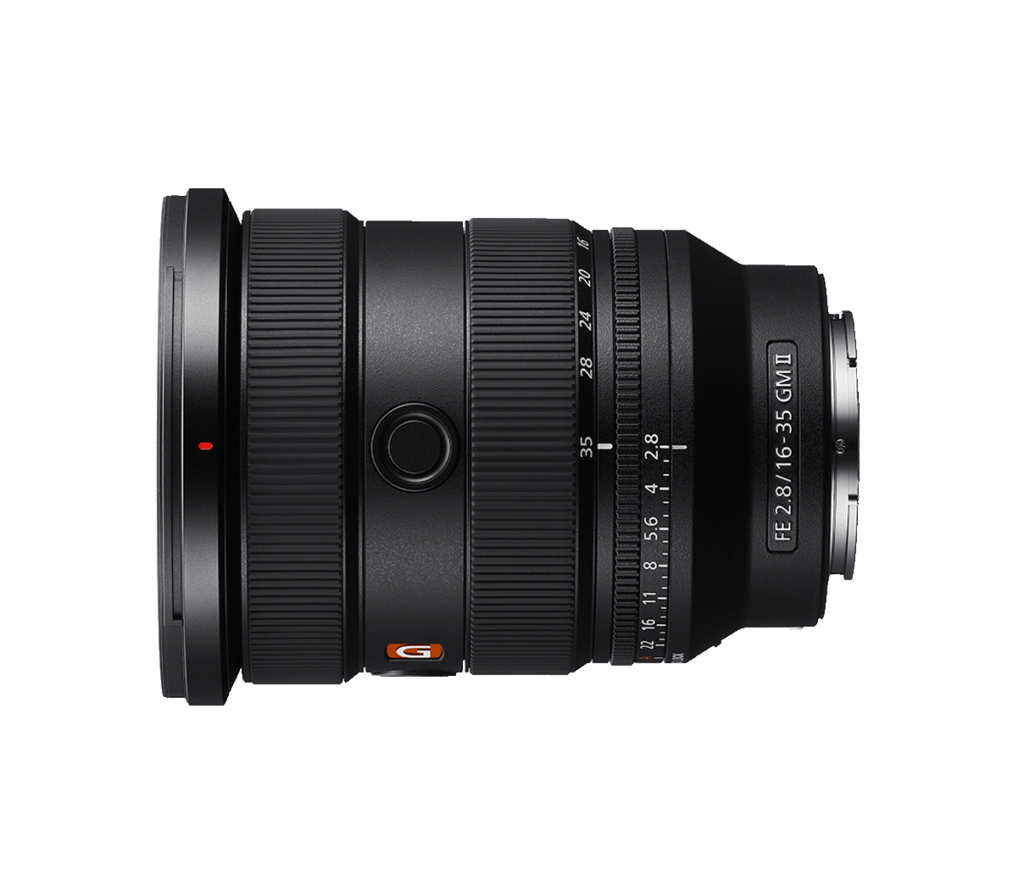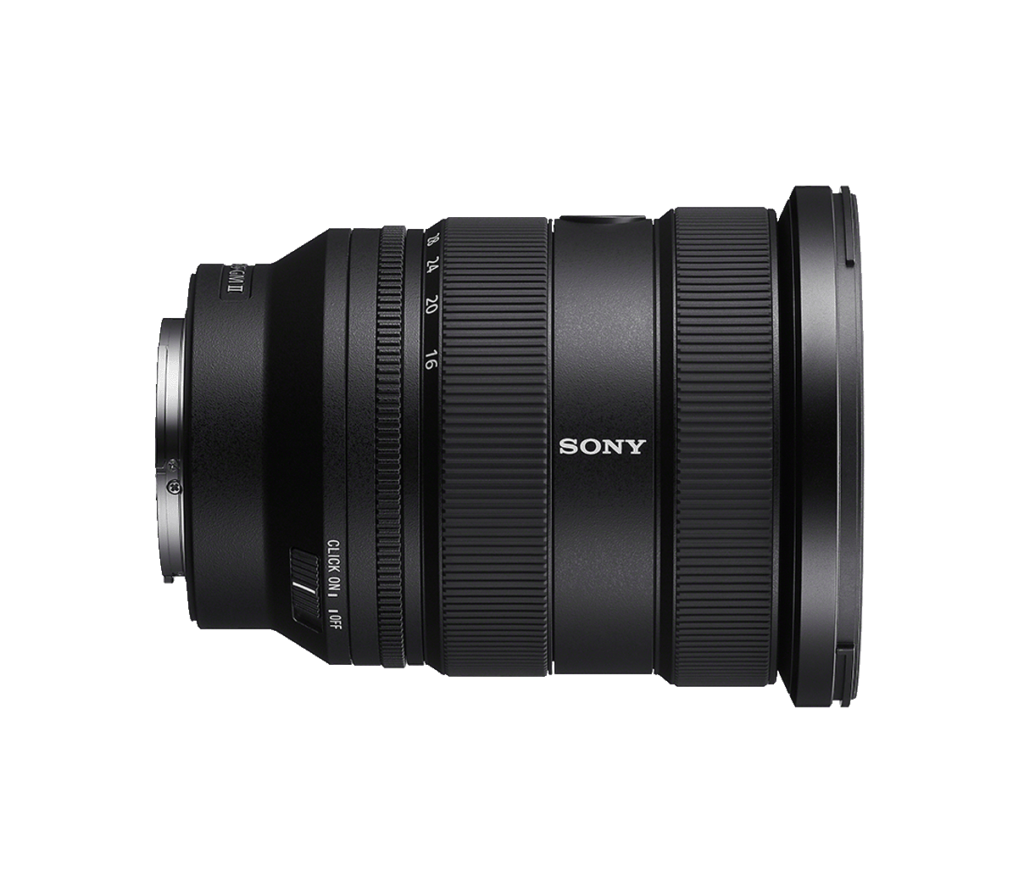The Sony FE 16-35mm F/2.8 GM II lens, a top-tier wide-angle zoom, has undergone enhancements, making it a hit with landscape and travel photographers. They’ll appreciate its compactness, weight, exceptional edge-to-edge clarity, and minimal optical aberrations.
Moreover, the lens’s improved close-up capability broadens its appeal, enabling wedding photographers and filmmakers to capture diverse shots with a single lens, from receptions to intimate details. Granted, it’s a costly investment, typical of premium zoom lenses. Nonetheless, the 16-35mm F2.8 GM II lens promises to be a coveted addition to many Sony users’ gear thanks to its substantial improvements over its predecessor.
Pros:
- Outstanding edge-to-edge image quality
- Inclusion of an aperture ring with a seamless, clickless function
- Reduced size and weight compared to the earlier model
Cons:
- Comes at a premium price point
- Upgrade may not be warranted for existing users.
In-Depth Analysis
The 16-35mm focal length zoom, a favorite across manufacturers, appeals to landscape photographers with its wide-angle view. It’s versatile for street photography and portraits at the 35mm end. Videographers find it indispensable.
Sony’s Lineup Evolution
Sony’s full-frame E mount boasts four 16-35mm lenses. It began with the Zeiss Vario-Tessar T* FE 16-35mm F4 ZA OSS, followed by the f/2.8 G Master version. The latter is a staple in Sony users’ bags. The latest addition is the FE PZ 16-35mm f/4 G lens.
New Features
The Sony 16-35mm F2.8 GM II lens stands out in terms of size and weight. It’s the smallest and lightest f/2.8 zoom lens in Sony’s FE lineup. It’s 10.1mm shorter and 133g lighter, a 20% reduction. This reduction is especially valuable for hikers.
The filter thread size remains at 82mm, consistent with its predecessor and the 24-70mm f/2.8 G Master II lens.
The new lens has a closer focus distance of 22cm, compared to the previous 28cm, resulting in a higher maximum magnification of 0.32x. This is a boon for videographers and those capturing close-up shots.
Sony designed the lens entirely in-house, with impressive optical elements that control distortion, aberration, ghosting, and flare more effectively than the 2017 model.
Focus breathing has been reduced, and some Sony cameras offer electronic compensation for it when shooting video.
Notable Features
The lens features an aperture ring with a ‘clickless’ switch for smooth video shooting. An ‘Iris Lock’ switch prevents accidental aperture changes.
Custom buttons on the lens barrel can be assigned various functions. They are particularly handy for switching between full-frame and APS-C crop mode, ideal for video shooting.
Build and Handling
The lens feels compact for a 16-35mm f/2.8, making it well-suited for travel. It pairs seamlessly with the A7C II, a compact camera with in-body image stabilization.
In practical use, this combination performs excellently in low light and close-up scenarios.
Conclusion
The Sony 16-35mm F2.8 GM II lens combines portability, optical excellence, and innovative features, making it a compelling choice for both photographers and videographers.
Sony FE 16-35mm F2.8 GM II: Pricing and Availability
Sony’s FE 16-35mm F2.8 GM II lens is priced at $2,300 / £2,400 / AU$ 3,700 and will hit the market in September 2023. It comes with a slight increase of $100 / £100 / AU$200 compared to its predecessor, taking into account inflation and price trends.
For potential buyers in 2023 who don’t own a 16-35mm f/2.8 lens, the price difference between the new model and the first-generation version, which sells for $2,200 / £2,000 / AU$2,700 new, might raise considerations.
Budget-Friendly Alternatives
Sony offers budget-friendly alternatives. The VARIO-TESSAR T* FE 16-35mm F4 ZA OSS, a bit dated, sells for approximately $750 / £500. A more recent choice is the FE PZ 16-35mm f/4 G lens, tailored for video and travel, priced at $1,200 / £839 / AU£1,599. Although not matching the image quality of the new f/2.8 lens, it’s a valuable option for those who don’t require a wider aperture.
Image Quality and Testing
Please note that during testing, I had access only to HEIC images straight from the camera, without raw data.
Chromatic Aberration
At 16mm f/2.8, minimal chromatic aberration appears in high-contrast edges, perceptible only at 400% zoom on my macbook.
With Chromatic Aberration correction enabled, any trace of it vanishes, although there’s a hint of digital correction. In practical terms, chromatic aberration is not a concern.
At 35mm and f/2.8, no chromatic aberration is apparent, with or without correction.
Vignetting
Without vignetting correction, slight darkening occurs at f/2.4-f/4, but it fades at f/5.6. Activating in-camera correction eliminates vignetting, which, in the digital age of 2023, is easily addressable.
Curvilinear Distortion
Moderate curvilinear distortion is visible at 16mm, and slight pincushion distortion appears at 35mm without correction. In-camera correction rectifies these distortions effectively. The optical design performs well, and digital correction easily handles the task. Raw files with the profile applied will provide further insights.
Sony FE 16-35mm F2.8 GM II: Image Quality
Sharpness Across the Frame
This lens excels in the frame’s center, delivering exceptional sharpness at both 16mm and 35mm. Optimal results are achieved between f/5.6 and f/11. While there’s a slight dip at f/16 (and f/2.8), it’s negligible except for meticulous pixel-peepers or lens chart enthusiasts. In practical use, it’s hardly noticeable. The lens showcases defined and crisp detail.
Corner Performance at 16mm
Surprisingly, even at 16mm in the corners, the HEIC files exhibit impressive sharpness and detail. Although they lack the center’s razor-sharp definition, they capture individual blades of grass and sand. This version is likely perceptibly superior to the original 16-35mm f/2.8 G Master, although a direct comparison wasn’t possible during testing.
Close-Up Shots
Close-ups reveal the lens’s capabilities. Despite the broad field of view, a shallow depth of field necessitates adjusting the aperture to ensure full focus. Bokeh at f/2.8 is smooth but consider f/4 or f/5.6 for complete subject sharpness when needed.
Handling Lens Flare and Ghosting
The lens’s unfamiliar elements and second-generation Nano ar coating effectively combat lens flare and ghosting. Shooting into a setting sun produces a stunning 22-point sun star. Flare is well-managed and the petal-shaped lens hood prevents unwanted light intrusion.
Focusing Performance
Focusing is seamless. The lens adeptly handles various tasks, from photography to video. With a wide-angle zoom, it efficiently adjusts elements and maintains depth of field, even for fast-moving subjects. It provides reliable performance, ensuring you get the shot you desire.
Should I Invest in the Sony FE 16-35mm F2.8 GM II Lens?
Buy It If:
- You’re a professional wedding photographer or filmmaker: Capture group shots in tight spaces and close-ups of intricate wedding details.
- Size and weight matter: The slight weight reduction over the first-generation lens is advantageous for travelers and hikers.
- Image quality is paramount: This lens offers top-tier detail and performance.
Don’t Buy It If:
- You don’t need an f/2.8 aperture: Consider the FE PZ 16-35mm f/4 G lens, which is lighter and more affordable.
- You’re a street photographer: If you seldom use the 16mm focal length, the Sony FE 35mm f/1.4 G Master lens may be a better choice.
- You require a wider angle: For budget-conscious buyers, the Sony FE 16-35mm F4 ZA OSS is an option, while the Sony FE 16-35mm F2.8 GM is ideal for those seeking the finest wide-angle zoom.
